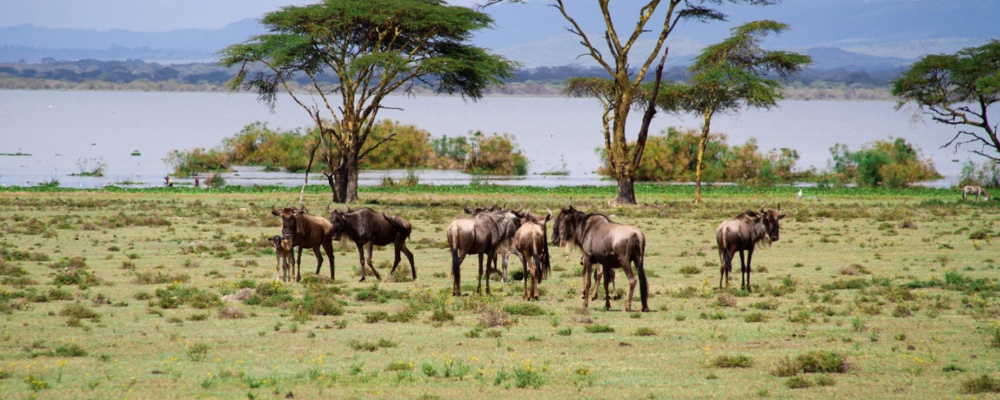Lake Naivasha National Park
Lake Naivasha is freshwater lake, fringed by thick papyrus. The lake is almost 13kms across, with an average depth of five metres. Lake area varies greatly according to rainfall, with an average range between 114 and 991 sq kms. At the beginning of the 20th Century, Naivasha completely dried up and effectively disappeared. The resulting open land was farmed, until heavy rains a few years later caused the lake to return to existence, swallowing up the newly established estates.

Afternoon wind and storms can cause the Lake to become suddenly rough and produce high waves. For this reason, the local Maasai christened the lake Nai’posha meaning ”rough water”, which was later mis-spelt by the British as Naivasha..
Much of the lake is surrounded by forests of the yellow barked Acacia Xanthophlea – the yellow fever tree. These forests abound with bird life, and Naivasha is known as a world class birding destination.
Giraffes wander among the acacia, Buffalo wallow in the swamps and Colobus monkeys call from the treetops while the Lakes large hippo population sleep the day out in the shallows.
The region surrounding the Lake is well worth exploring. There are two more smaller lakes nearby, Oloidien, and Sonachi, a bright green crater lake.
Hell’s Gate National Park lies beside the lake. This Park was named for its pair of massive red tinged cliffs framing a geothermically active interior of steam vents and bubbling springs. The park is home to a profusion of plains game and birdlife. Walking is permitted, making it ideal for hiking, biking, and rock climbing.
Sunsets are come with the haunting call of a Fish Eagle high over the Lake bringing the day to a perfect end….
